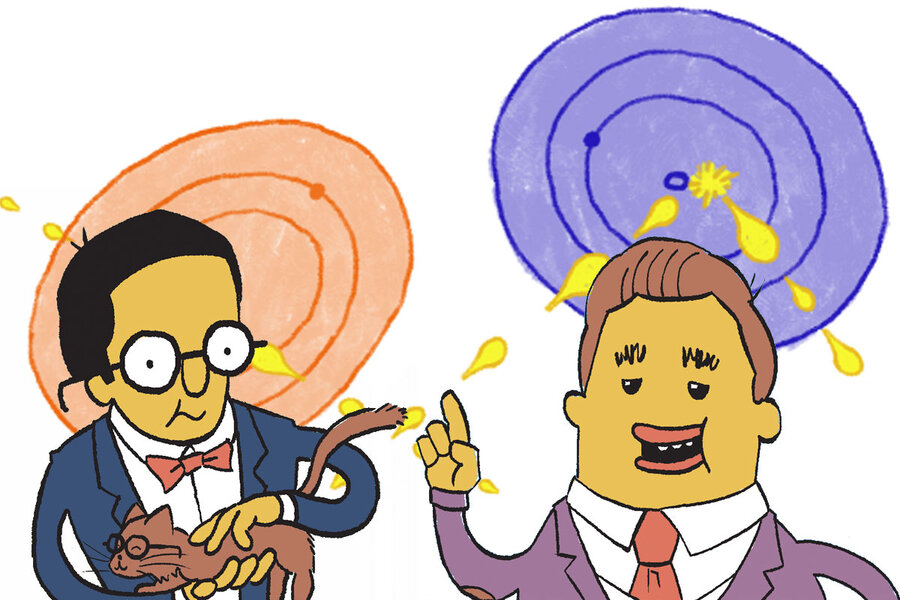Beyond Schrödinger’s cat: A serious comic about quantum physics
Loading...
Earlier this month, Yale scientists took up one quantum physics' oldest questions: When an electron goes from one orbital to another, does it jump instantaneously without warning? Or is the transition more smooth and predictable?
Two major figures in the history of quantum theory had different answers. The Danish physicist Niels Bohr thought that quantum jumps were instant and completely unpredictable. The Irish-Austrian physicist Erwin Schrödinger thought that they were smooth and continuous, that is to say, they're not jumps at all.
To learn more, Yale University physicist Zlatko Minev and his colleagues built an artificial atom, a small superconducting circuit that has discrete energy levels just like a naturally occurring atom, and observed how its energy levels change. In a paper published in Nature, Dr. Minev found an “advance warning signal” – a momentary lull of excitation prior to the jump. They found that, while quantum jumps are indeed random and discrete, as Bohr said, the evolution of the jump is also coherent and continuous, as Schrödinger said.
“These two seemingly opposed viewpoints coexist,” Dr. Minev says. “While quantum jumps are unpredictable and discrete on a long timescale, they are continuous and can possess a degree of predictability on a short timescale.”
This comic strip, which Dr. Minev reviewed for accuracy (but had no say in how he was drawn) explains the history of the question and the Yale experiment.
"To catch and reverse a quantum jump mid-flight" appeared in the June 3 edition of Nature.






